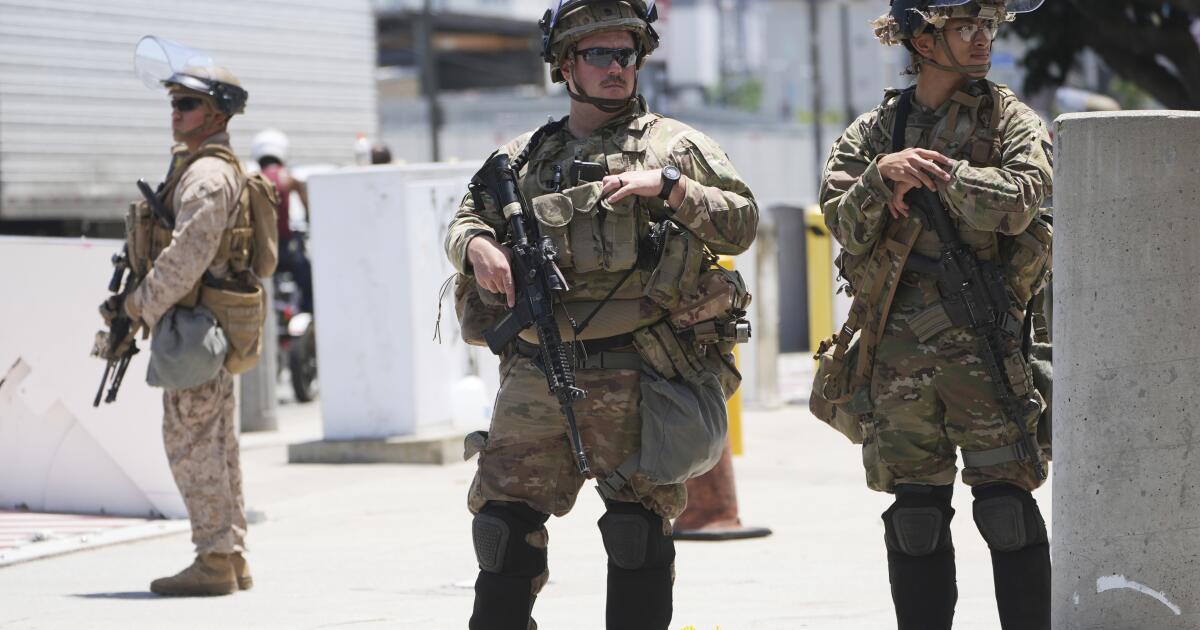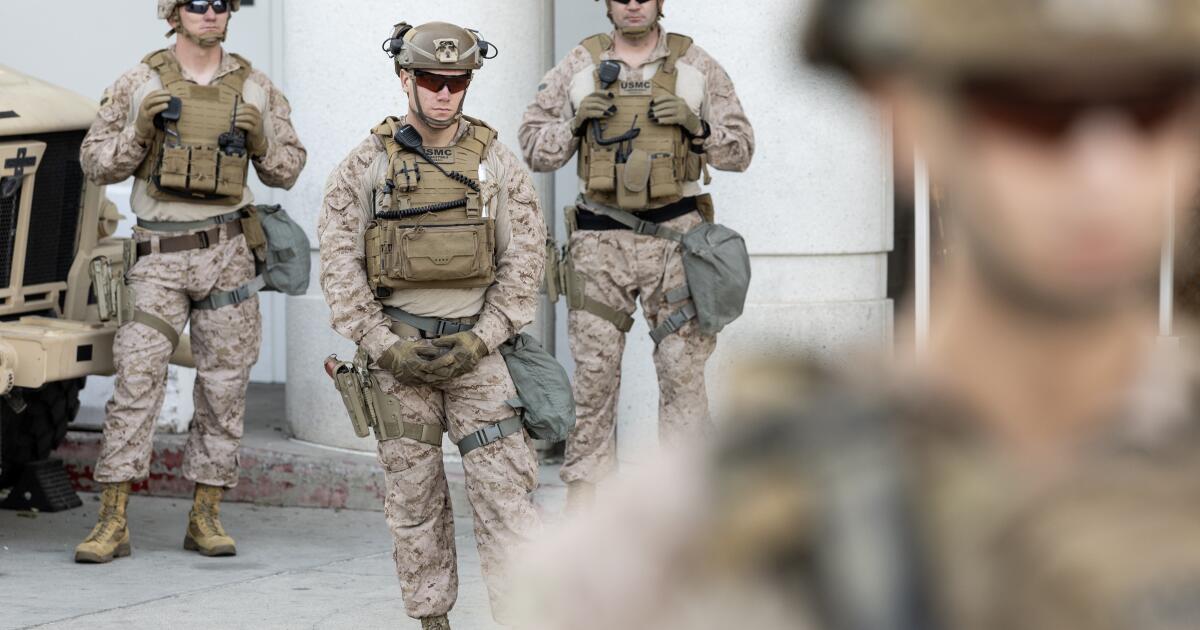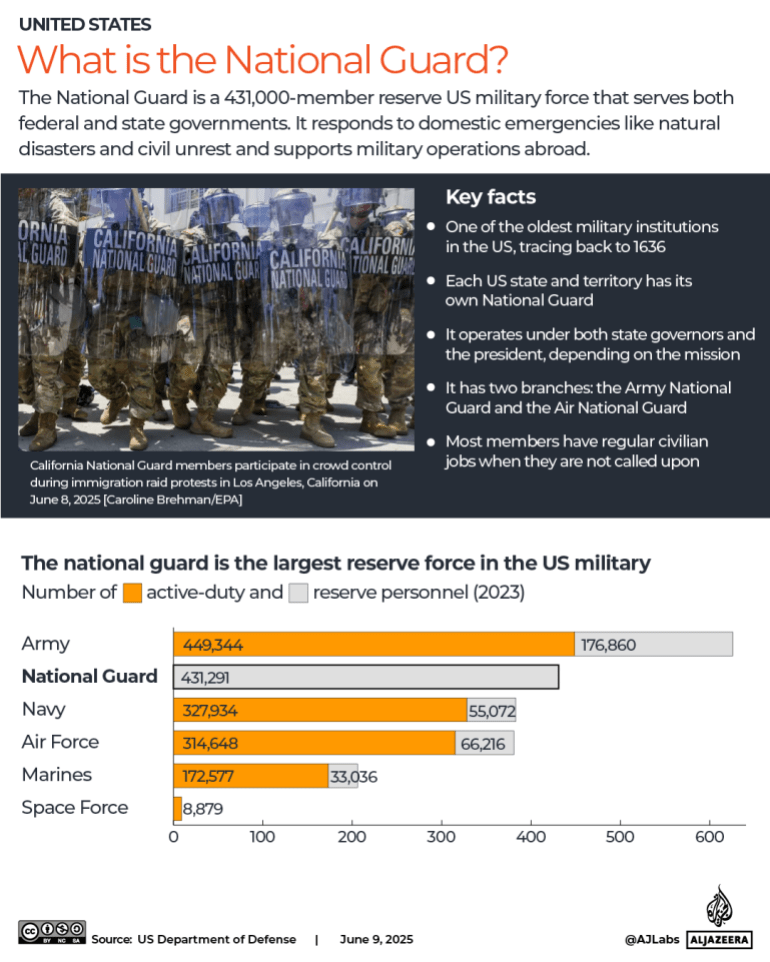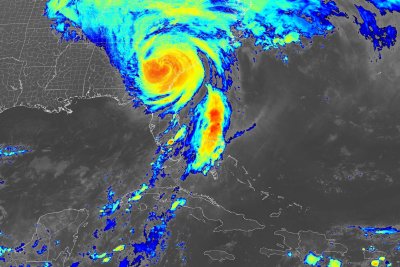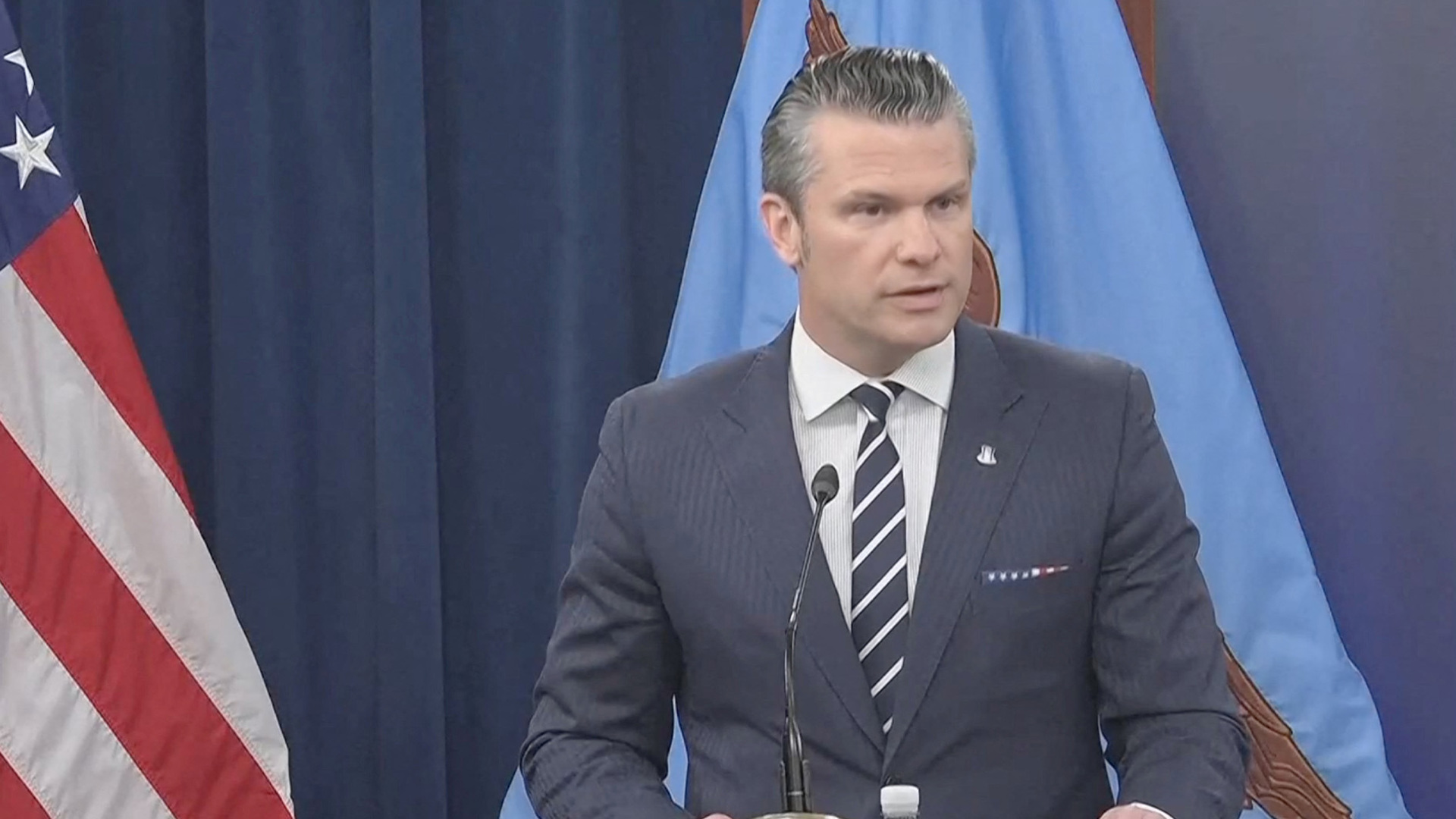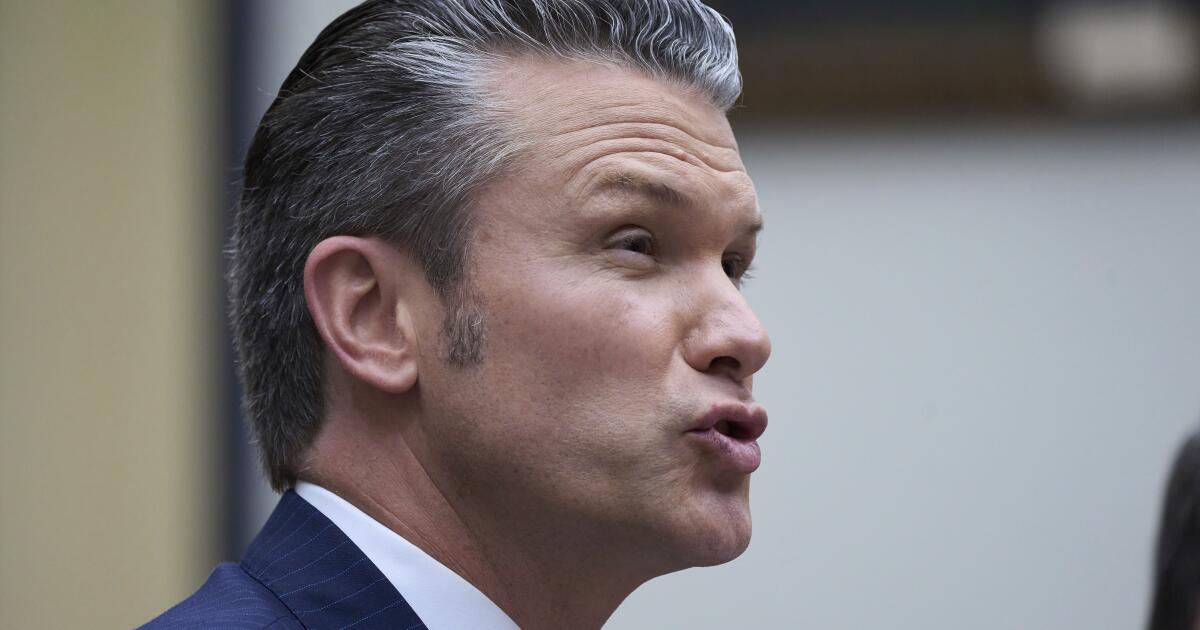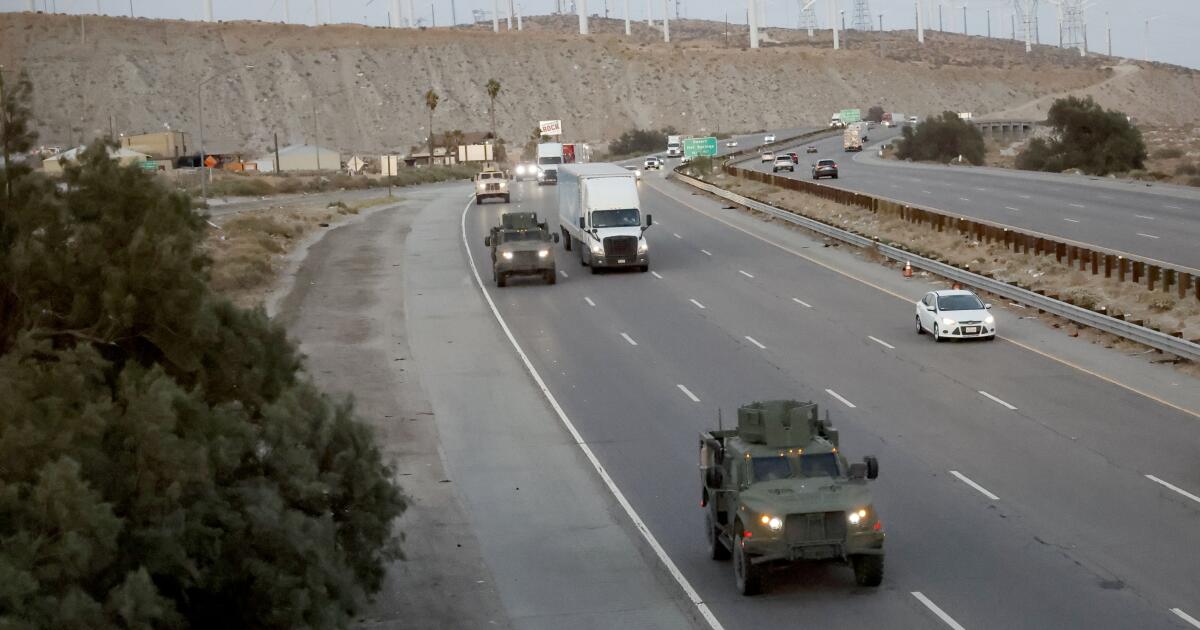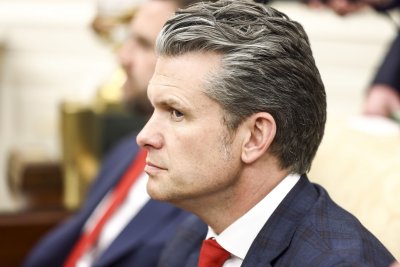More than 1,000 National Guard troops leaving L.A.
Nearly two months after President Trump took the extraordinary step of deploying the National Guard to Los Angeles to quell public unrest over immigration raids, the Pentagon on Wednesday announced that it was withdrawing more than a thousand troops.
The departure of about 1,350 members of the National Guard, ordered by Defense Secretary Pete Hegseth, represents just the latest rollback of troops from L.A. this month since more than 5,000 National Guard members and Marines were deployed to the city in June.
Sean Parnell, chief spokesman for the Pentagon, said that approximately 250 California Guard members would remain in L.A. to protect federal agents and buildings.
“We greatly appreciate the support of the more than 5,000 Guardsmen and Marines who mobilized to Los Angeles to defend Federal functions against the rampant lawlessness occurring in the city,” Parnell said in a statement.
Mayor Karen Bass, who had dubbed the deployment an “armed occupation,” was quick to celebrate the troops’ departure.
“Another win for Los Angeles,” Bass said on X on Wednesday night. “We will continue this pressure until ALL troops are out of L.A.”
The troops’ presence in Los Angeles — and their role of protecting federal agents conducting immigration raids — was fiercely contested. President Trump said the troops were necessary to maintain order as the administration ramped up its immigration raids and protesters covered downtown buildings in graffiti, set Waymos on fire and clashed with Immigration and Customs Enforcement agents.
But many of California’s key Democratic leaders said there was no need for federal troops in the city: Local law enforcement could handle the protesters, they said, and the presence of federal troops in highly militarized gear only inflamed tension in the region. They also argued that federal officials had deployed the troops illegally.
Just a day after the first convoys of National Guard troops rumbled into to L.A. on June 8, Gov. Gavin Newsom sued federal officials, saying that the deployment exceeded federal authority and violated the 10th Amendment in an “unprecedented usurpation” of state power. Newsom also complained that the deployment had diverted the California National Guard from critical duties such as combating wildfires and interrupting the drug trade at the U.S.-Mexico border and across California.
His office released a statement responding to the latest drawdown Thursday.
“President Trump is realizing that his political theater backfired. This militarization was always unnecessary and deeply unpopular,” the statement said. “The President must do the right thing to end this illegal militarization now because the economic and societal impacts are dire. The women and men of our military deserve more than to be used as props in the federal government’s propaganda machine.”
Over the weeks, as the L.A. protests subsided, the troops did not appear to have a clear role and many appeared to be bored. By July, a source within Newsom’s office with knowledge of the military operation told The Times that only about 3% of the troops were taking part in daily missions.
“There’s not much to do,” one Marine told The Times as he stood guard earlier this month outside the Wilshire Federal Building in Westwood.
The majority of National Guard members were left largely milling about the Joint Forces Training Base in Los Alamitos in an operation that the Pentagon had estimated would cost about $134 million.
On July 15, the Pentagon withdrew nearly 2,000 California National Guard soldiers from L.A. and on July 21 it withdrew 700 active-duty Marines.
